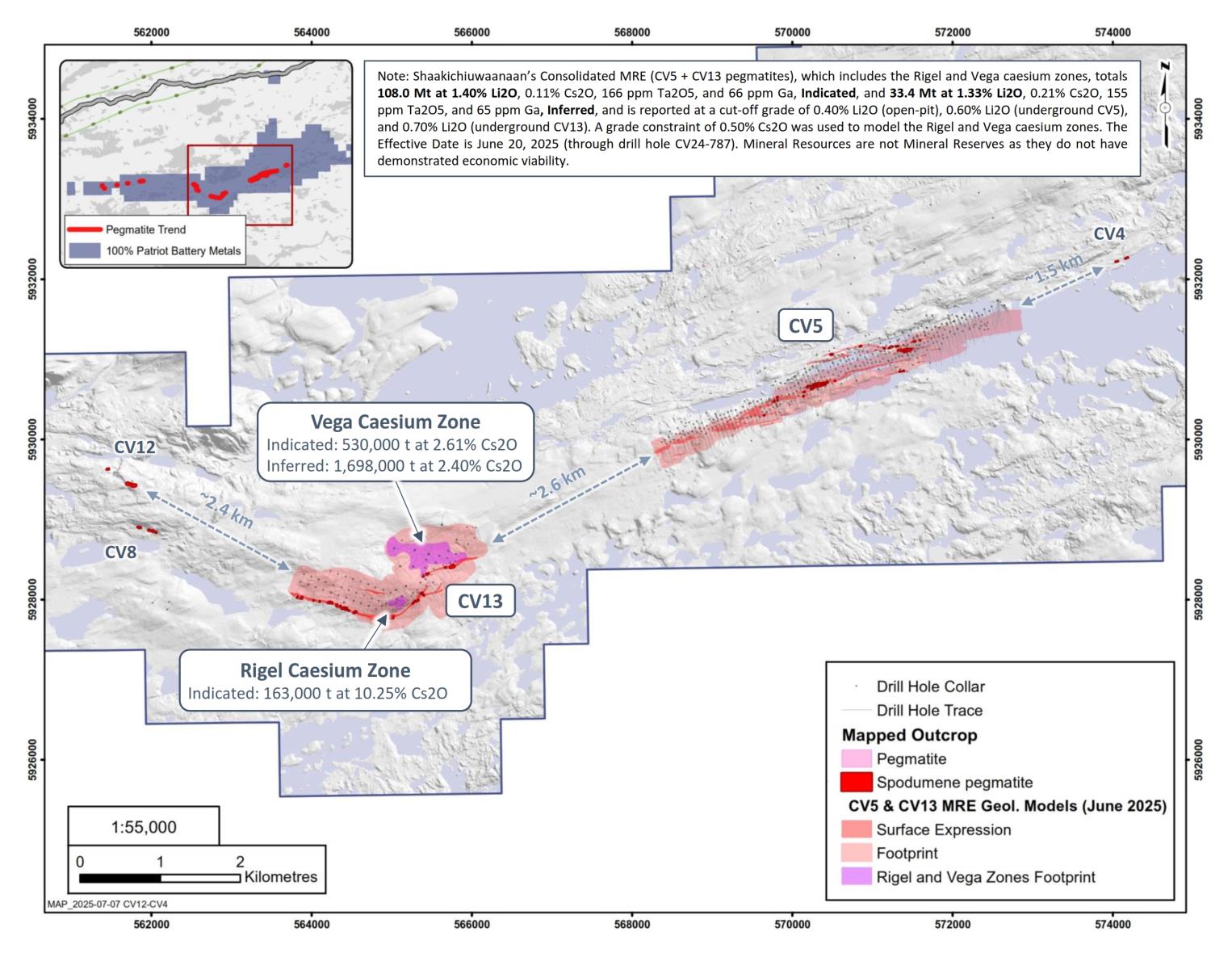Patriot Makes World-First Pollucite-Hosted Caesium Discovery in Quebec
7/21/2025
In a world increasingly hungry for high-tech minerals, Patriot Battery Metals (ASX: PMT) has added an unexpected jewel to its growing collection. The company has just declared a maiden mineral resource estimate for caesium at its Shaakichiuwaanaan Project in Quebec, revealing what is now the world’s largest known pollucite-hosted caesium pegmatite deposit.
The numbers are impressive by any measure. At the Rigel zone, an indicated resource of 163,000 tonnes grades a chunky 10.25% Cs₂O (caesium oxide), while Vega shows an indicated 530,000 tonnes at 2.61% and an inferred 1.7 million tonnes at 2.40% Cs₂O. That adds up to over 71,000 tonnes of contained caesium oxide across both zones. For context, the Sinclair mine in Western Australia produced just 1,551 tonnes before its pollucite resource was exhausted in 2019.

Pollucite is the mineral of interest here, an extremely rare component of lithium-caesium-tantalum (LCT) pegmatites. As Ken Brinsden, PMT’s managing director, put it: “This is another feather in the cap of our technical team… the sheer scale and grade of this caesium discovery stands out relative to anything else globally.” He added that the discovery will enhance the value of the broader Shaakichiuwaanaan Project, where lithium and tantalum are already proving abundant.
While lithium still dominates headlines, caesium is quietly becoming a critical player in emerging technologies. Historically used in oil and gas drilling and medical imaging, caesium is now attracting attention for its role in next-generation solar panels. When incorporated into perovskite-based solar cells, it can significantly improve performance and lifespan – not a bad proposition in the race to decarbonise.
Importantly, the Rigel and Vega caesium zones are hosted within the same pegmatite system as PMT’s lithium-rich CV13 zone, part of the larger Shaakichiuwaanaan mineral resource. This means the caesium could become a valuable byproduct, potentially processed alongside lithium and tantalum. The company is evaluating recovery using conventional X-ray ore sorting, and further metallurgical work is underway.
The timing is fortuitous. There are only three known historical pollucite-hosted caesium mines globally – Sinclair (WA), Bikita (Zimbabwe), and Tanco (Canada). All are either exhausted or approaching end-of-life, leaving the global market in a supply crunch. Given caesium’s niche applications and opaque pricing (caesium carbonate reportedly trades at around US$120/kg, while pure caesium metal fetches upwards of US$2,500/oz), PMT’s deposit could become a cornerstone of future supply.
The caesium estimate comes ahead of PMT’s maiden lithium reserve and feasibility study at the CV5 pegmatite, due later this quarter. But management is already looking ahead. Brinsden flagged the potential for caesium to be incorporated into a broader economic case for the project, noting that demand is nearing “a key inflection point.”
For now, investors would be wise to watch how PMT balances the technical and commercial challenges of multi-commodity development. But if the caesium market does heat up, the Rigel and Vega zones could prove more than just a side act.
In the mineral stakes, it seems Patriot has struck more than just lithium luck.